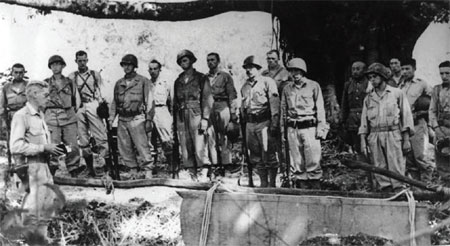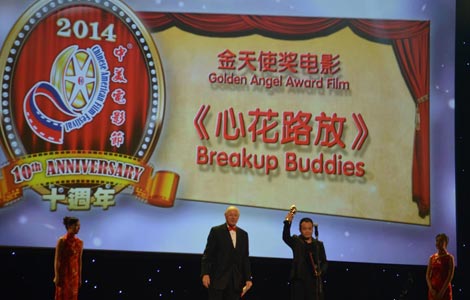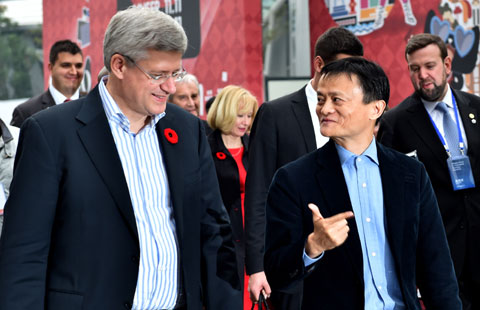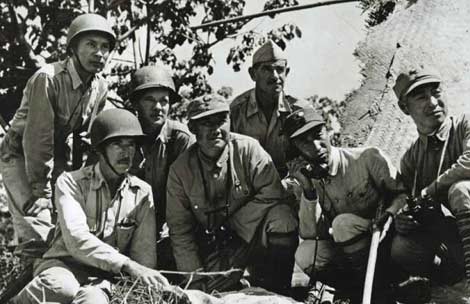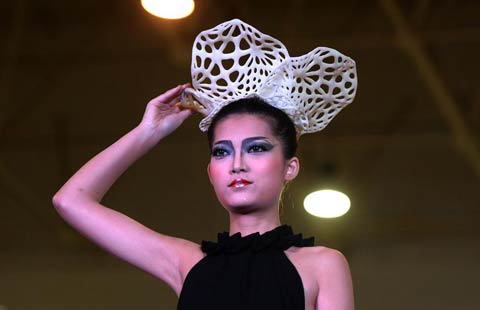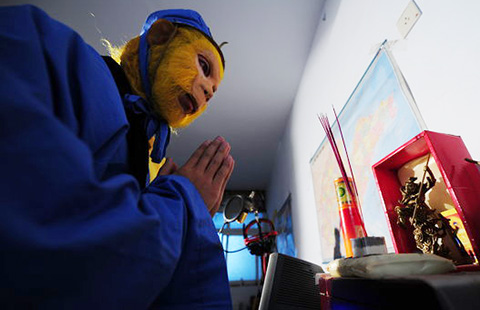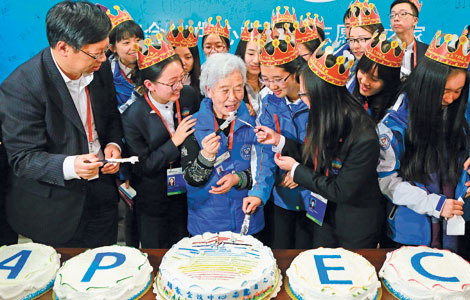A history largely forgotten
Updated: 2014-11-07 13:01
By Cai Chunying(China Daily USA)
|
||||||||
|
This photo, taken by a US Army photographer in the China-Burma-India Theater (CBI) during World War II, shows American soldiers performing a funeral service in Tengchong, China. The photo led to the resurfacing of 23,000 CBI photos at the US National Archives and the National Memories exhibit. |
The funeral
Stodter wrote that he conducted the funeral service "with the fullest military honors possible while the battle was still in progress" and "all available American officers and enlisted men attended."
At the Hoover Institute, the search team found the image of Stodter, which matched the military officer performing the funeral service in that photo. McMurrey indeed was the American soldier being buried.
In the meantime, Zhang's team in China found McMurrey's original burial site, on top of the Gaoligong Mountain in Tengchong, the highest battlefield in the whole CBI Theater. In 1947, the US Army repatriated his remains, and he was reburied with full military honors in his hometown in Texas.
In July 2005, Barbara and her sister Beverly, as well as Shan Stodter, the daughter of Colonel Stodter, were invited to China by Zhang and his team to see the original burial site.
"It was so beautiful," recalled Barbara of that day to China Daily. "It was all so very moving."
The three women's journey to China and the burial site were recorded for a documentary initiated by a friend of Zhang's. While filming scenes in the US, the crew learned from Easterbrook of the collection of CBI images at the National Archives. The crew went to the archives, obtained 200 or so photos and some video footage for the documentary. They also learned that the entire collection consisted of the 23,000 or so photos.
After rallying volunteers and getting financial support from private citizens, Zhang and his team showed up at the archives in early 2010.
Zhang recalled his emotions upon seeing the photos for the first time:
"We truly were left trembling....For how many years before that I had not even dared to dream that so many images from our parent's generation could exist so clearly and vividly before our eyes."
Not long after the team returned to China, enlarged photos from the archives were put on exhibit in several Chinese cities, and people got to see a history so dear to their past yet so largely forgotten.
The close collaboration between Americans and Chinese in the CBI is vividly shown in those photos. US Army officers use sand tunnels to teach their Chinese counterparts battle strategies; Chinese soldiers learn to use new American weapons; American nurses treat Chinese soldiers' wounds; Chinese children give thumbs up to passing American tanks.
"It is absolutely wonderful. There appears to me to be a great thirst for information on that part of the history of the Chinese people," said Easterbrook, who was invited to a couple of exhibitions in China.
Most Viewed
Editor's Picks

|

|

|

|

|

|
Today's Top News
Sultan of Brunei acquires NYC's Plaza Hotel
Mexico cancels bullet train deal
China, Japan reach four-point agreement on ties
China's wealthy look to make 'social impact' on education
Airline exec sees bright side for China and US
China, US must lead on climate
China's coal solution could be in steam
Asian Americans supported Democrats in elections
US Weekly

|

|
